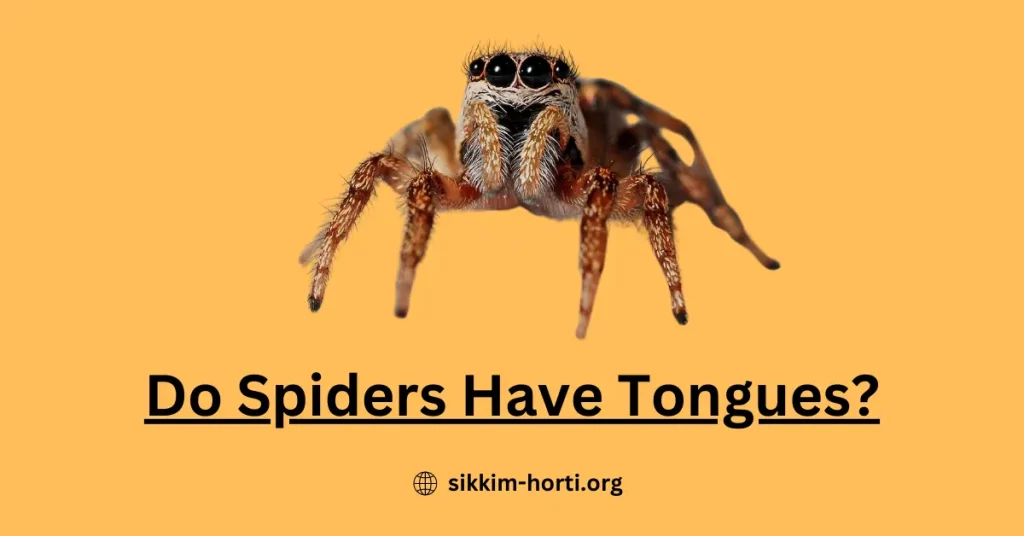Spiders do not have tongues in the traditional sense. Instead, they have chelicerae, which are hook-shaped jaws with tapered edges. These jaws help spiders to hold and break down their prey into a macerated bolus. While spiders do not have tongues, they have other structures that act as tongues and perform similar functions.
Contents
Do Spiders Have Tongues?
Spiders, the enigmatic eight-legged architects of nature, have intrigued humans for centuries. However, when it comes to their dietary habits and physiological characteristics, there’s much more than meets the eye. An inquiry often on the lips of the curious is, “Do spiders have tongues?” Well, to unravel this mystery, it is vital to delve into the anatomical labyrinth of the spider’s mouth.
Unveiling the Arachnid Enigma
Spiders are undoubtedly among the most enthralling creatures in the animal kingdom. Their eight-legged elegance, coupled with a lifestyle that hinges on intricate webs and cunning predatory skills, invites a deep sense of curiosity.
The spider anatomy, a masterpiece of nature’s craftsmanship, holds intriguing secrets especially about their feeding habits. Understanding these habits requires a thorough investigation of their mouthparts.

A Spider’s Mouth: The Fundamental Understanding
A spider’s mouth, unlike that of humans or other animals, is not just a simple opening. It’s a complex structure composed of several different parts, all serving unique purposes. At first glance, one might notice the spider’s fangs, or chelicerae, which are the most prominent part of its mouth. These fangs are not only used for biting and injecting venom but also for manipulating food.
The spider’s mouth also includes a pair of appendages called pedipalps, which look like miniature legs and serve various roles such as feeling, tasting, and manipulating prey. In male spiders, the pedipalps are also used for mating.
The actual mouth opening, called the preoral cavity, is located behind the chelicerae and pedipalps. This cavity leads to the pharynx, which works as a sucking pump to draw in the liquid food.
The Chelicerae: The Spider’s Mighty Jaws
The chelicerae are the spider’s jaws, which carry the venomous fangs. Unlike the jaws of humans or other animals, these aren’t used for chewing. Instead, their primary role is to immobilize prey by injecting venom. The chelicerae are pointed and sharp, allowing spiders to pierce the exoskeletons of their prey.
Chelicerae can move in two distinct ways, depending on the species of spider. In most spiders, they move in a pincer-like fashion, similar to a crab’s claws. But in some species, like tarantulas and trapdoor spiders, the chelicerae move vertically, up and down, giving them a powerful stabbing motion.
The Pedipalps: The All-Purpose Appendages
The pedipalps of a spider are small, leg-like appendages located near the mouth. They are versatile and serve various purposes, acting as the spider’s ‘hands.’ Pedipalps are used for feeling and manipulating their environment, holding prey, and in some cases, they also have sensory roles, assisting in tasting and detecting pheromones. In male spiders, the pedipalps have a specialized structure used to transfer sperm to the female during mating.
The Labium and Labrum: The Spider’s Lips
The labium and labrum, the equivalent of a spider’s upper and lower lip, are located around the mouth opening. They are hardened structures that help to guide food into the mouth. The labium, or the lower lip, also serves as a ‘trap door’ that prevents the spider’s liquid meal from spilling out of its mouth before it’s swallowed.
How Do Spiders Eat Their Food?
Unlike mammals, spiders don’t have the typical set of jaws lined with teeth for grinding food or a tongue for aiding the process of ingestion. Instead, they are equipped with a pair of chelicerae, sturdy, fang-like appendages that serve as the ‘mouth’ of the spider.
A spider’s diet is majorly liquid since their mouth anatomy does not permit the ingestion of solid food. They turn their prey into a drinkable form through a fascinating process. The first step is catching the prey, which is often carried out by building intricate webs. Once an unfortunate insect becomes entangled, the spider quickly immobilizes it by injecting venom through its chelicerae.
This venom is a potent cocktail that acts both as a paralyzing agent and a pre-digestive enzyme, starting the process of liquefaction of the victim’s internal organs.
What follows is a gruesome display of a mealtime ritual unlike any other in the animal kingdom. The spider will regurgitate digestive fluids from its stomach onto the prey.
These fluids, laden with enzymes, break down the insides of the prey, reducing them to a liquid state. It’s akin to having your meal in a blender before drinking it. This phenomenon of external digestion allows the spider to suck the liquefied internal tissues of its prey directly into its stomach.
In the case of larger prey, the spider may opt to inject the digestive fluids directly into the body of the prey. The fluid works its magic within the body of the prey, reducing its tissues to a soup-like consistency. The spider can then ingest this nutritious ‘soup’, leaving behind the prey’s empty exoskeleton.
The labium, or the lower lip of a spider, plays a crucial role in this feeding process. It functions like a gatekeeper, ensuring that only liquefied food enters the spider’s body. It’s an ingeniously efficient way of feeding that perfectly suits the spider’s predatory lifestyle.
Conclusion
As we recap, you finally get to know whether do spiders have tongues or not . The spider’s anatomy and feeding mechanisms offer a mesmerizing insight into the world of these unique arachnids. Their mouth, although missing a tongue, serves as an efficient tool in their survival.
To summarize, spiders have showcased an amazing example of how an apparent disadvantage, such as the absence of a tongue, can be turned into an opportunity for survival and success. Their intriguing world continues to fascinate us, reminding us of the boundless creativity of evolution.
